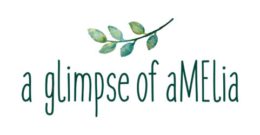Cookware | PART 1
This would have to be my most asked question. I knew I would have to complete significant research before I could write a post about it. I have not fully made all the swaps I am recommending below, mostly because I haven’t had the time to research it like I have done now.
I’ll try to simplify this as much as I can, because all people really want to know is what is bad and what should I use instead.
What to avoid:
 Be aware of the country of origin and the brand when you buy. Buying a no brand or cheap brand is not a good buy because the materials are not disclosed, tested or often healthy. (Not regulated).
Be aware of the country of origin and the brand when you buy. Buying a no brand or cheap brand is not a good buy because the materials are not disclosed, tested or often healthy. (Not regulated).
 Stone and granite cookware because the resins used to bind them together have been found to be toxic.
Stone and granite cookware because the resins used to bind them together have been found to be toxic.
 Nonstick pots and pans or anything like rice cookers, sandwich presses, air fryers, because of the nonstick coatings. The PF’s (so anything generically titled nonstick could contain them or similar chemicals) like PFA, PFOA, PFTE, Gen X, PFBS etc. The reason we want to avoid this category is it is linked to a variety of health issues and environmental issues and thought to be carcinogenic, contain hormone disruptors, POPs (Persistent organic pollutants) & VOCs. (Volatile organic compounds).
Nonstick pots and pans or anything like rice cookers, sandwich presses, air fryers, because of the nonstick coatings. The PF’s (so anything generically titled nonstick could contain them or similar chemicals) like PFA, PFOA, PFTE, Gen X, PFBS etc. The reason we want to avoid this category is it is linked to a variety of health issues and environmental issues and thought to be carcinogenic, contain hormone disruptors, POPs (Persistent organic pollutants) & VOCs. (Volatile organic compounds).
 Look out for Lead- which leaches into food. Lead, however, is toxic in any dose. It serves no use in our bodies and we have no ability to purge lead.
Look out for Lead- which leaches into food. Lead, however, is toxic in any dose. It serves no use in our bodies and we have no ability to purge lead.
 Look out for Cadmium-Cadmium is one heavy metal that may leach from certain glazes and coatings on pots and pans.
Look out for Cadmium-Cadmium is one heavy metal that may leach from certain glazes and coatings on pots and pans.
 Non Stick in all its forms including stone pans (as PF’s can be used as binders)
Non Stick in all its forms including stone pans (as PF’s can be used as binders)
 Aluminium (unless it’s in the base and used for heat conducting, food must not touch the surface)
Aluminium (unless it’s in the base and used for heat conducting, food must not touch the surface)
 Tin (can leach into food) especially tin from the 40’s, 50’s & 60’s.
Tin (can leach into food) especially tin from the 40’s, 50’s & 60’s.
 Clay (although the process is clean for manufacturing, where is the clay sourced? Does it contain heavy metals?)
Clay (although the process is clean for manufacturing, where is the clay sourced? Does it contain heavy metals?)
 Copper (not recommended as an everyday cooking option. Ok when used in base layers for heat conduction.
Copper (not recommended as an everyday cooking option. Ok when used in base layers for heat conduction.
Some other points:
* Buy at reputable stores and with cookware buying a good brand is best.
* If unsure, ask. If you’re out laying several hundred dollars on a new cookware set, it doesn’t hurt to ask if this product contains any of the points listed as bad.
* Your cookware depends on what and how you cook and how long for. You need to tailor your pots and pans for how your house uses them.
* Keep the inside of pots and pans colour free. White is ideal. Bright colours can contain heavy metals.











